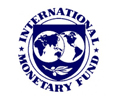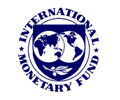IMF raises Asia growth forecast, warns of risks of US-China tensions

The International Monetary Fund (IMF) revised its forecast for Asia’s economic growth on Thursday, but warned that a re-escalation of US-China tensions could deal a heavy blow to a region highly integrated in global supply chains.
Economic activity in Asia-Pacific held up better than expected in April, even though the region bore the brunt of U.S. tariffs, said Krishna Srinivasan, director of the IMF’s Asia and Pacific Department.
But he warned that there were significant downside risks to the region’s prospects, as “the tariff burden is not over” and could still rise.
“When the risks to the world become real, Asia will experience greater losses. This is a region that is highly integrated in the global supply chain, so when there are tensions between large countries such as the United States and China, the impact will be greater on Asia,” he said at a press conference.
Trade tensions between the US and China further escalated after Beijing expanded rare earth export controls, prompting threats from US President Donald Trump to increase tariffs on Chinese goods by an additional 100% starting November 1.
The potential impact of the bilateral dispute is not reflected in the IMF’s latest projection, which estimates the Asian economy will grow by 4.5% in 2025, slowing from 4.6% last year but up 0.6 percentage points from estimates made in April. They project growth will slow to 4.1% in 2026.
“The region will once again make the largest contribution to global growth – around 60%, both this year and in 2026,” Srinivasan said.
Exports were supported by front-loading shipments by companies ahead of tariff hikes and a surge in intra-regional trade, he said. A technology boom driven by artificial intelligence is also boosting exports, especially from South Korea and Japan.
A booming stock market, lower long-term borrowing costs and a weaker dollar are also helping, Srinivasan said, although he cautioned that risks to the outlook are skewed to the downside.
Interest rates could rise again especially if trade policy uncertainty or geopolitical tensions escalate, while tightening financial conditions could increase debt burdens for some countries and hamper growth, Srinivasan said.
Concerted efforts to carry out reforms to increase trade and investment will help drive durable growth in the years to come, he added.
To mitigate the impact of external shocks, Asian countries can shift their economies away from dependence on exports towards greater domestic demand, Srinivasan said.
Greater regional integration would also increase gross domestic product by 1.4% in the medium term for all of Asia, he added.
Source: Reuters
